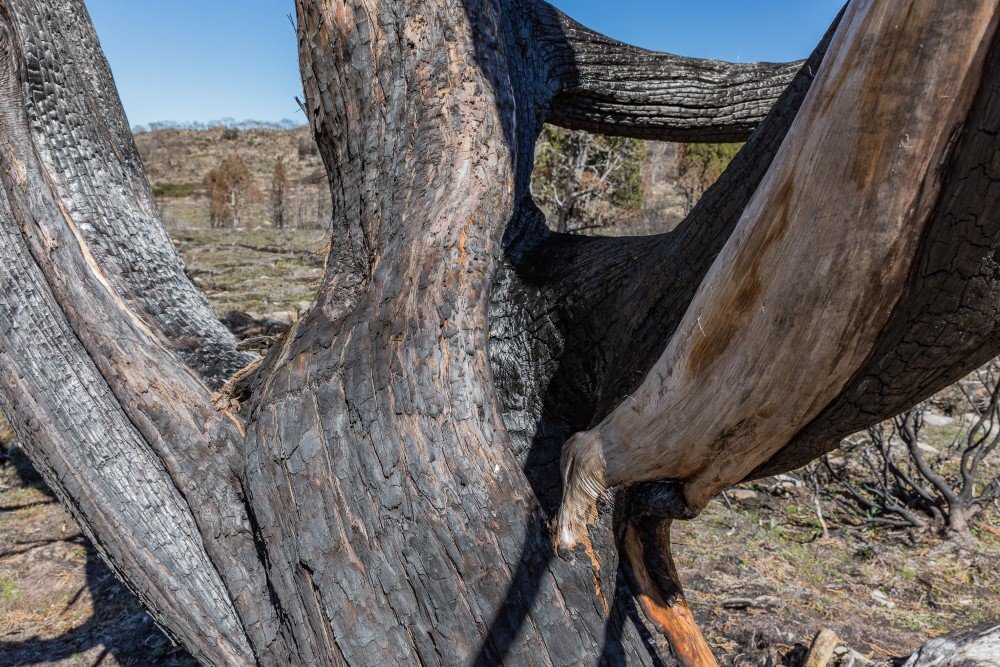New aerial images reveal bushfire damage in Tasmanian World Heritage Area one year on

DRAMATIC NEW AERIAL images reveal a scorched and barren landscape a year after unprecedented bushfires incinerated part of Tasmania’s Wilderness World Heritage Area.
“What’s striking is that 12 months on you can see that much of the fire-damaged area will not grow back,” said Jim Casey, spokesman for the Australian Firefighters Climate Alliance. “The fingerprints of climate change are all over this. It’s not something that’s far off; it’s happening here and now.”
Fires sparked by a series of lightning strikes in January 2016 burned through 19,000ha of World Heritage-listed land, coming within just 6km of the iconic Dove Lake. Losses included ancient stands of pencil and King Billy pines and 1000-year-old endemic cushion plants.

Evidence of the fire front at Lake Mackenzie in Tasmania’s central highlands. (Image: Dan Broun)
While some species will bounce back from seed over time, many of the plants in the affected area are not adapted to cope with fire.
“These pines don’t like fire at all. This was very abnormal for them,” explained David Bowman, Professor of Environmental Change Biology at the University of Tasmania. “The dead pines are not going to recover.”
The images were captured by Hobart-based wilderness photographer Dan Broun, who has a close affinity for the area. He has visited several times to document the changes wrought by fire.
“These areas are globally unique and very beautiful on many levels,” said Dan. “What we’ve found is the damage to significant plant species is absolute in many areas. With a warming climate and poor land management we are surely witnessing an era of intense crisis for alpine Tasmania.”

A charred ancient pencil pine. Some of the pencil and king billy pines burned in the January 2016 fires were estimated to be about 1500 years old. (Image: Dan Broun)
David said the photos were fascinating, but not surprising given the intensity of the blaze. “Sections in the Fisher River gorge were of very high severity, killing eucalypts and rainforest. Parts on the plateau with the pines were spectacularly intense,” he said.
“The new normal”
Such severe and large fire events, called ‘megafires’, are becoming more frequent – Tasmania has suffered two in the last five years.
“Megafires, like the one we saw in Tasmania last year, are becoming the new normal,” said Jim. “They are large, hard to predict and that makes our job as firefighters more difficult and dangerous.”

Rainforest and mixed forest around Fisher River. (Image: Dan Broun)
The rising incidence of these destructive disasters can be attributed to the impacts of a changing climate. “The fact that we had fires was not the story. The story was that we had such a dry spring and summer which made these fires possible,” said David, who is planning field work in the fire-affected area to study the event in detail.
Jim said he is also concerned about the role of climate change. “The climate is becoming more volatile and it is not only creating the precursor weather conditions for the fires but is also supercharging the storms that often ignite them,” he said. “The cost of not addressing the root cause of bushfires is high and growing ever higher.”
READ MORE:
- VIDEO: Behind the scenes photographing Tasmania’s living giants
- Natural World Heritage sites at risk from human pressure: study
- 2016 crowned hottest year on record
- Living with bushfires




